
Nineteen 2016 Fuller Challenge semi-finalists revealed
By Justine Testado|
Tuesday, Jul 12, 2016
Related
The ninth cycle of the prestigious 2016 Fuller Challenge is well underway, and competition is as fierce as ever. Following the expert jury's rigorous evaluations, 19 semi-finalists were announced today. The international Challenge searches for bold and effective holistic solution strategies to some of the most pressing problems in contemporary society. Multi-disciplinary teams work hard for a chance at winning the $100,000 grand prize that will help implement their initiative. According to the Buckminster Fuller Institute, most of this year's entrants were newcomers while 18 percent have entered in previous cycles. This year's semi-finalists are inter-disciplinary initiatives that address various issues, from human rights to food production.
A few semi-finalists include: PITCHAfrica's Waterbank Schools; the Urban Death Project's sustainable approach to human burials; the Sustainable Health Enterprises (SHE), which addresses lack of menstrual products in developing countries; and The Sentinel Project's Una Hakika that works to diffuse inflammatory misinformation and rumors with reliable, accurate information in high-risk areas of conflict.
Finalists are expected to be revealed in the coming weeks, while the overall winner will be announced sometime this fall.
Learn more about the semi-finalists below.
RELATED COMPETITION 2016 Fuller Challenge Call for Proposals
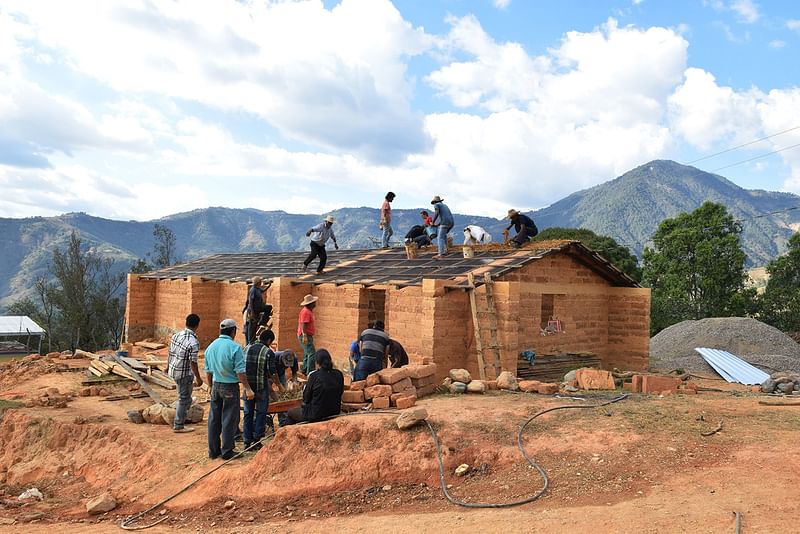
Cooperación Comunitaria: “In 2013, hurricanes Manuel and Ingrid devastated the West of Mexico, causing 200 deaths and affecting over 230,000 people. In the steep La Montaña region of Guerrero, home to 85% of that state's indigenous population and one of Mexico's most marginalized localities, landslides crippled communication and infrastructure, destroyed crops, and irreparably damaged more than 5,000 adobe homes. It is Mexico's most seismically active area, and adding insult to injury, winds there can reach 110 km/h. Cooperación Comunitaria has envisioned and is implementing a comprehensive model to radically improve these marginalized populations' living conditions by working with communities to rebuild—combining sound geological and engineering risk analysis with local indigenous wisdom. They engage with local people in the placement, design, and building of affordable, seismically sound, eco-friendly, culturally appropriate dwellings using local materials. The organization works on education and training programs, sustainable economic development through agroforestry and agro-ecological projects, as well as the revival and revitalization of local indigenous culture, including its herbal and medical traditions. This is an exemplary, multi-faceted initiative that combines science and local traditions in a comprehensive approach community resilience.”
Build Change: “Over 200 million people worldwide live with the constant threat of being killed by their house collapsing in an earthquake or windstorm, as the death toll in Ecuador's recent earthquake so tragically illustrated. Build Change is a unique international initiative working to boost natural disaster preparedness on a large scale by engaging holistically with all the stakeholders: homeowners in the most vulnerable, ‘informal’ areas; local builders, planners, engineers, and architects; and municipal, regional and national governments. Theirs is a preventive, "whole-systems" change approach that combines universally recognized, cost-effective, state-of-the-art seismic retrofitting and construction techniques adapted to each cultural context using locally produced materials, financing mechanisms for homeowners, preparedness education, community outreach and capacity building, and policy-level efforts on building code improvements. Build Change has worked in a wide range of locations, including Colombia, Guatemala, Haiti, the Philippines, Indonesia, and Nepal on both pre and post disaster projects. Theirs is a preventive systems change approach, bringing all of the elements and stakeholders of the construction value chain together in order to fund, incentivize, and widely disseminate disaster-resistant building practices. Build Change demonstrates the most effective and comprehensive approach to global seismic preparedness we have encountered.”
Concern America “empowers local communities in isolated and underserved regions to provide the bulk of their medical services themselves. Working with mostly rural, poor communities in Colombia, Guatemala, and Mexico, they train community members to become Health Promoter Practitioners (HPPs). What sets Concern America apart from any other medical aid project is that its goal is not ‘aid’ but self-reliance. The presumption that one has to be a university-educated medical professional to provide healthcare excludes billions of people from access to care. Concern America has identified a wholly different opportunity, and has successfully shown that trained community members, many with little formal education, can successfully treat 80% of the medical issues in their communities and can even perform a number of surgical procedures. Now, hundreds of thousands of people in isolated communities have primary healthcare services in their own villages. Globally, Concern America is creating the infrastructure for a significant expansion of the HPP model through the completion of its HPP training Manual in 2016. The manual, How to Teach About Health, includes 18 teacher guides and HPP student manuals, and will allow any organization or institution to implement this truly groundbreaking healthcare model in any locale.”

Glasswing International: “Emigration rates from the Northern Triangle (El Salvador, Honduras, and Guatemala) are signaling a humanitarian crisis. The instability, poverty and violence roiling much of Central America has led to the emigration toward the U.S. of many desperate children and adolescents—a tragic humanitarian crisis. Many of these unaccompanied minors are being returned each year to very dangerous conditions in their home countries, which are overwhelmed and ill equipped to help them. Glasswing International—an NGO with a long, proven track record of well-designed social and development programs in the region—has designed a highly effective program to protect and re-integrate these children into their communities, schools, and families. Using a referral system that draws on and coordinates all the major stakeholders, they seek to integrate mental health counseling, support services, education, vocational training, recreation, and more in order to create safe pathways for youth to avoid endemic gang violence and have the opportunity to thrive. Glasswing's approach strikes us as revolutionizing existing efforts, consolidating a number of reactive efforts into a proactive solution to the vicious cycle of displacement.”
ECOTIERRA: “Deforestation results in 15% of annual greenhouse gas emissions globally, and often deforestation is the result of small farmers worldwide clearing native tree groves and adopting unsustainable agricultural practices. ECOTIERRA is a certified B corporation working to create a sustainable agricultural economy across the Andes cordillera, with plans to replicate their model in Cote d’Ivoire and Colombia. The company works as a matchmaker, connecting investors to coffee and cocoa cooperatives throughout Peru. The cooperatives partner with ECOTIERRA to develop a customized, bottom-up agroforestry design that suits their land and production needs, and in turn the cooperatives receive additional revenue from carbon offsets. While reforestation to offset carbon emissions constitutes a piece of the climate change mitigation puzzle, the increased yields and long-term sustainability of ECOTIERRA’s agroforestry projects are directly contributing to the economic, social, and environmental resilience of 12,000 families in Peru.”
MIT Open Agriculture Initiative develops “open-source ‘controlled environment agriculture’ (CEA) technologies to experiment and innovate in seeking alternatives to the unsustainable and destructive practices of industrial agriculture, and to make highly localized food production more viable. The project has designed transparent, open-source, "hackable" hardware and software platforms to allow indoor farmers conduct networked experiments in ‘food computers’, built on three scales: a personal tabletop-sized unit best suited for homes, schools, maker spaces, and experimental facilities; a shipping container-sized module suited to supply restaurants, cafeterias, hospitals; and a warehouse/industrial-scale ‘food data center’. All of these will be equipped with environmental sensors, actuators, and network connectivity so that data can be openly shared. Users can modify hardware and software and in turn share their improvements as part of a learning network to create a community-curated knowledge base, facilitating the rise of ‘smarter,’ local, independent, decentralized food production. The system allows for precise manipulation of climate and environmental variables in controlled settings in order to generate data on plant yields and responses in a wide range of conditions—information that is potentially of great use to farmers and researchers everywhere. The project has distributed six prototypes of their smaller ‘food computers’ in Boston-area schools in 2015, and ultimately hopes to distribute 150,000 models to schools around the U.S., aiming to inspire a new generation of technologically savvy farmers.”
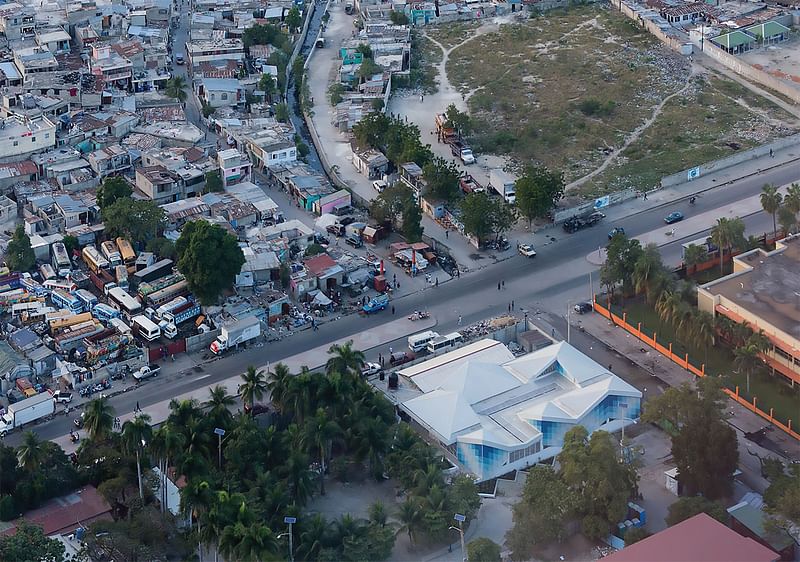
The African Design Center: “Led by Rwandan designer Christian Benimana and the MASS Design Group, this project aims to transform the African built environment through a comprehensive program to recruit and train the next generation of African designers and architects. In the next two decades, Africa will experience a population boom of likely over one billion people. There is a dearth of African architects to design the many units of housing, clinics, and schools required by this growing population. In all of East Africa, only 1,200 registered architects serve a population of 160 million. The vision of the African Design Center is for African designers to lead the effort to plan and develop the enormous amount of urban infrastructure that Africa will need, and to do it with sustainability, cultural appropriateness, local materials and artisanship, and human health and wellbeing as core principles. The first step in their effort will be a flagship campus in Kigali, Rwanda, which will be an apprenticeship-based institute and a hub for collaboration, as well as a research center in materials innovation in light of local crafts traditions. The intent is to create a continent-wide movement, reminiscent in some ways to Europe's Bauhaus, that can inspire a sustainable design revolution in Africa, which urgently needs innovative, effective solutions to its demographic, climatic, economic, and socio-political challenges.”
International Bridges to Justice (IBJ), “founded by attorney Karen Tse 17 years ago, is a unique organization working to bolster fair, professional criminal justice systems around the world. IBJ seeks to end the torture and abuse of detainees by training attorneys and legal officials in legal best practices, and by creating a global legal community that can be supportive and protective of lawyers working in difficult contexts. A legal system that respects human rights norms is one of the defining hallmarks of a civilized society. That ideal is rarely achieved, and egregious rights abuses have been on the rise globally in recent years. Without a credible legal system, there are limits to a society's socio-economic and cultural development. IBJ works with governments and existing legal systems in order to train legal communities to respect the laws that are on their own books, and to build the functionality of their legal systems. It has trained over 20,000 lawyers at live events and over 2 million using innovative online e-learning tools in multiple languages. While groups such as Amnesty International and Human Rights Watch do the invaluable work of applying outside pressure, IBJ works on the ‘inside’ to reinforce credible legal infrastructures, building relationships with local attorneys, national bar associations and government officials, and holding workshops and multi-stakeholder roundtables to work toward correcting systemic problems.”
The Sentinel Project's Una Hakika system is an “effective approach to defusing inter-ethnic/inter-communal violence and tension in the world's highest risk ‘hot spots’ for conflict, using the communication tools most relevant in a given context. Their work is to counteract inflammatory misinformation and rumors with trusted, accurate information. Una Hakika, their flagship pilot project, is well established in Kenya's Tana Delta near the Somali border—a volatile region that has seen much violence in recent years. They are now adapting their system to a radically different context, aiming to quell anti-Muslim hostility and violence in Myanmar. The strategy involves first rigorous research into the social, cultural, and political situation in a given locale; then the patient building of social networks to nurture trust among the various stakeholders and historically antagonistic ethnic groups; then the recruitment of locally respected ‘community ambassadors’ and the signing up of substantial numbers of dispersed households to their cellphone-based information service, so that the most accurate accounts of local incidents can be rapidly disseminated. This model is a vital solution for communities in which rumors can rapidly spiral out of control, leading to hundreds of deaths in short order. Some of their very promising research may also be applicable to neutralizing rumors and disinformation in more "developed world" settings, including such phenomena as financial panics.”
South Vihar Welfare Society for Tribal (ASHRAY): “The trafficking of adolescent girls, women, and children, along with child labor, illicit prostitution, the underground trade in human organs, etc., are immense global problems that victimize the most vulnerable and historically disenfranchised populations while enriching criminal cartels. ASHRAY is an exemplary organization that seeks to address the roots of the problem among one of the world's poorest and most oppressed groups: tribal people in India. ASHRAY, a totally grassroots effort led by local women, works with tribal communities in Jharkand State to bolster education, skills training, agricultural production and food security, economic opportunities, and women's empowerment, all to counteract the poverty and social instability that make trafficking possible in the first place. In the last 6 years, they have sensitized over 500,000 people on the issue of human trafficking, mobilized 350+ women-led self-help groups, identified over 2,500 trafficking victims, and rescued and rehabilitated more than 50 adolescent girls. ASHRAY is a shining example of a community organizing itself to comprehensively address the root causes of critical social challenges, and it serves as an inspiring model for the rest of India and globally.”

RELATED NEWS "GreenWave" wins the 2015 Buckminster Fuller Challenge
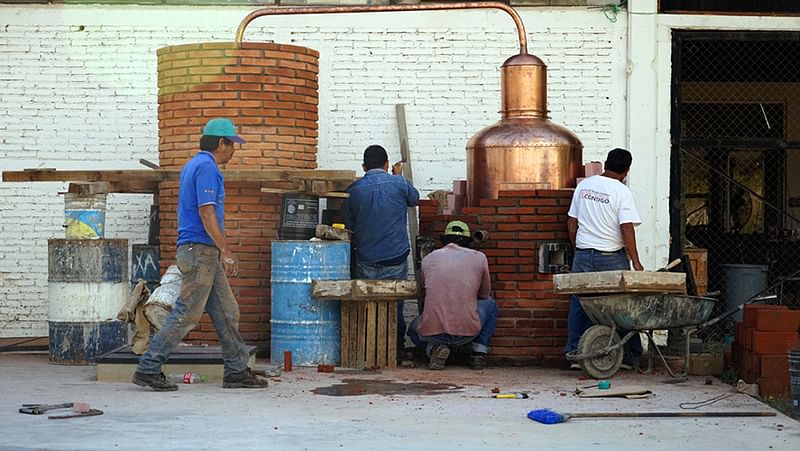
Procesos Proambientales Xaquixe: “In Mexico, artisans are a highly specialized workforce that utilizes diverse materials, designs, and techniques to create products of great cultural value. They form a backbone of the economic life of many regions and are key contributors to the national identity. Paradoxically, many of them live in extreme poverty, with 7 of every 10 suffering from asset poverty. They usually meet energy demands by burning wood, industrial wastes, or toxic materials, in turn burdening their studios, local communities, and the environment. Procesos Proambientales Xaquixe has created a methodology for micro-industrial sustainability by implementing a wide range of alternative energy technologies and by repurposing discarded materials from local waste streams. This system fosters a trans-disciplinary network of small businesses, or ‘eco-clusters,’ which share knowledge and resources to sustainably enrich their communities and economies while helping detoxify their environment. Located in Oaxaca, where artisans represent 10% of the local population, the first eco-cluster has linked glass, ceramics, and mezcal producers with universities, research centers, and cultural institutions, developing alternative, closed-loop systems of production. The initiative works by, incubating processes and technologies that are transferrable to a variety of industries, including glass, ceramics, forging, brewing, organic agriculture, and many more. In most parts of the world, small artisanal enterprises are the main drivers of employment and of cultural distinctness, but very few projects work with this part of the population. This initiative is a unique, highly imaginative approach to bolstering and ‘greening’ this vital economic sector.”
Evrnu, SPC “has developed a proprietary technology that goes far beyond standard garment recycling to deconstruct used cotton textiles at the molecular level, creating a range of multi-purpose regenerated cellulose fibers far stronger and more durable than the original fabrics. The global textile and apparel industry relies on a vulnerable, resource-intensive supply chain that has few solutions for the waste it creates. Currently, consumers dispose of 80% of all textiles directly to landfill. If Evrnu’s technology, still at an early stage of development, succeeds in the market and is widely adopted, it could "upcycle" millions of tons of polluting waste. Their process uses very little energy or water, almost no virgin materials, and a minimum of chemical solvents—98% of which can be recaptured and reused to repeat the process. This makes Evrnu’s innovation "the most environmentally friendly fiber on the planet." Should this highly expert team with decades of experience in the garment industry achieve its goals, their initiative has the potential to be a game-changer in the world of textiles, and to make major contributions toward reducing the energy consumption, massive water use, and devastating environmental damage engendered by the lifecycle of cotton and other fabrics.”
ZERI Network and Sanctuary Asia (with the support of APPL), “the brainchild of renowned eco-entrepreneur and activist Gunter Pauli and his Blue Economy initiative, is a comprehensive project that seeks to simultaneously tackle multiple goals: conservation, wildlife and biodiversity protection in one of the world's most diverse regions (which includes endangered rhinos, tigers, and elephants); food security, sustainable economic development, and effective social services for a currently impoverished population; and the demonstration of cutting-edge organic agro-ecological methods' capacity to be competitive. The locus of this initiative is the extensive Hathikuli organic tea plantation and the adjoining Kaziranga National Park along the Brahmaputra River in India's Assam State. A partnership between the large multinational TATA Group, the plantation's owner, Sanctuary Asia, the most prominent Indian conservation and wildlife protection NGO, and Blue Economy, this project seeks to develop a wide gamut of innovative niche agricultural products as well as coordinated reforestation, soil regeneration, and water and soil bioremediation, combined with the generation of economic opportunities for the regional population. This model joins together the best thinking of biomimetic designers, environmentalists, business leaders and local citizens and governments, could be an exemplar of a comprehensive approach to the harmonious co-existence of conservation and economic development.”
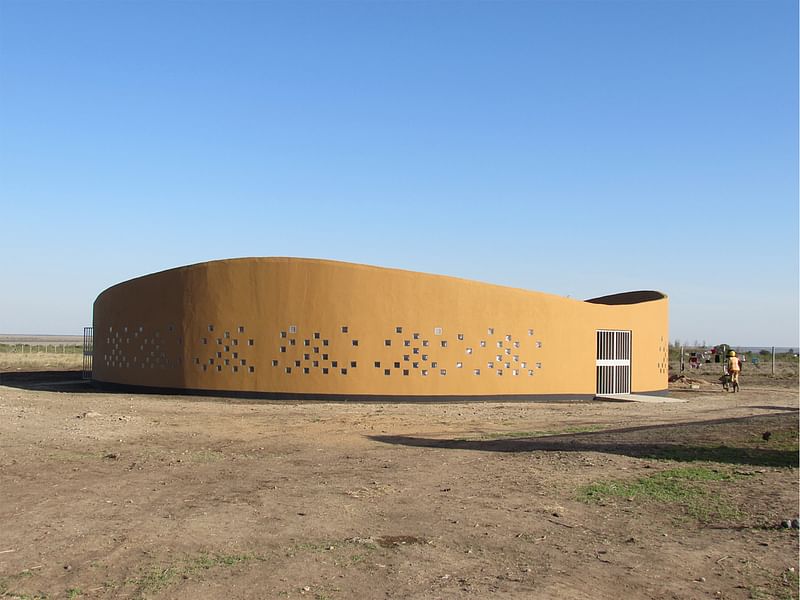
PITCHAfrica’s Waterbank Schools are “working demonstrations of the remarkable leveraging power of water catchment as a socially integrated solution to resource scarcity. Waterbank Schools start with a harambee, bringing teachers, students, and parents into the communal construction process, using local materials and labor. The schools harvest rainwater on their rooftops and store water in a central cistern that includes a ceramic filtration system. The classrooms are positioned to face in toward the rainwater-harvesting courtyard where gardens are planted to grow crops. This system serves students, faculty, and the surrounding community with clean, accessible water, and the building acts as a learning tool and community training and knowledge hub for a whole region. In a world in which one billion people are living without access to clean water and water-borne illnesses are rampant, this simple design offers an elegant and practical way to improve sanitation, health, and education (especially for girls, who are often the ones tasked with water collection in their families and often miss school for that reason). Since being recognized as a Fuller Challenge Finalist in 2013, PITCHAfrica has completed a second campus in Kenya with a storage capacity of 2,500,000 liters distributed across 7 new structures, supplying irrigation for 10 acres of conservation agriculture. The organization is seeking to replicate its transformative model at additional demonstration sites throughout Africa, and is encouraging global dissemination of the model for a variety of structures and contexts.”
KTK-BELT is “a home-grown Nepalese biodiversity preservation, conservation, education, rural sustainable development, and job creation initiative that seeks to protect and share the invaluable ecological knowledge held by local/indigenous people in a "vertical university", which will stretch from Koshi Tappu (67 meters above sea level), Nepal's largest aquatic bird reserve, to Kanchenjunga (8,586 meters above sea level). The ‘vertical university’ will include plots of research land in various locations and eventually corridors between them. This eastern region of Nepal is incredibly biodiverse, with more than 6,500 vascular plants, 180 mammals, and 800 bird species—many of which are threatened by the country's rapid deforestation. Meanwhile, Nepal suffers from widespread poverty and a swelling youth population, at least 40% of whom are unemployed, leading to massive emigration in search of job opportunities. KTK-Belt seeks to holistically combine conservation and youth employment strategies by embedding low-cost, low-tech, field-based educational opportunities into micro-conservation hubs in local communities. The model includes the eventual development of educational infrastructure across rural villages, building capacity by empowering local youth and farmers to become teachers in permaculture design, conservation, environmental education, GIS, agro-forestry, and ecotourism.”

Tides Canada Initiatives' Rainforest Solutions Project: “The decades-long struggle over British Columbia's enormous coastal rainforests has culminated in one of the most extraordinary conservation, social justice, and indigenous rights victories in recent memory: a historic 250-year agreement between all the stakeholders (26 ‘first nations,’ lumber and mining corporations, leading environmental organizations, and the BC provincial and Canadian federal governments) to conserve and sustainably manage the 15-million acre Great Bear Rainforest, one of the last pristine temperate rainforests on the planet. The small core team that helped shepherd the highly complex, painstaking process to pressure, nudge, and entice all of the parties to come to the table has ultimately designed a groundbreaking ‘Ecosystem-Based Management Model’ that drew from cutting-edge environmental science, deep cultural respect for First Nations' sovereignty, and political savvy. They are now working to propagate the universally replicable components of their strategy to other conservation efforts of a similar scale in other geographic contexts. In a world rife with bitter struggles over resources—many in lands populated by indigenous and/or historically disenfranchised groups—the lessons and best practices of this initiative provide a potentially invaluable road map to the resolution of such conflicts, from the Amazon to the Congo Basin to Indonesia to Siberia.”
The Urban Death Project (UDP): “The funeral industry is a broken system: economically, socially, and environmentally. Each year in U.S. cemeteries, we bury 30 million board-feet of hardwood, 90,000 tons of steel, 1.6 million tons of concrete, and millions of gallons of formaldehyde-laden embalming fluid. Beyond the tremendous waste inherent in burial is the massive amount of embodied energy from the manufacture and transport of caskets, headstones, and grave liners. Cemeteries all over the world are reaching capacity. On the other hand, cremation emits a staggering 600 million pounds of CO2 annually in the U.S. alone. The Urban Death Project has designed a scalable, regenerative urban system based on the natural process of decomposition, with the first full-scale human composting facility to be located in the city of Seattle, Washington. Bodies and forest waste are composted and transformed into soil. The process is housed in buildings that are hybrid public park, funeral home, and memorial space, with the potential to situate death care facilities in repurposed urban infrastructure. The Urban Death Project’s solution to today’s toxic, $20 billion funeral industry presents a new model of death care that is both human- and nature-centric.”
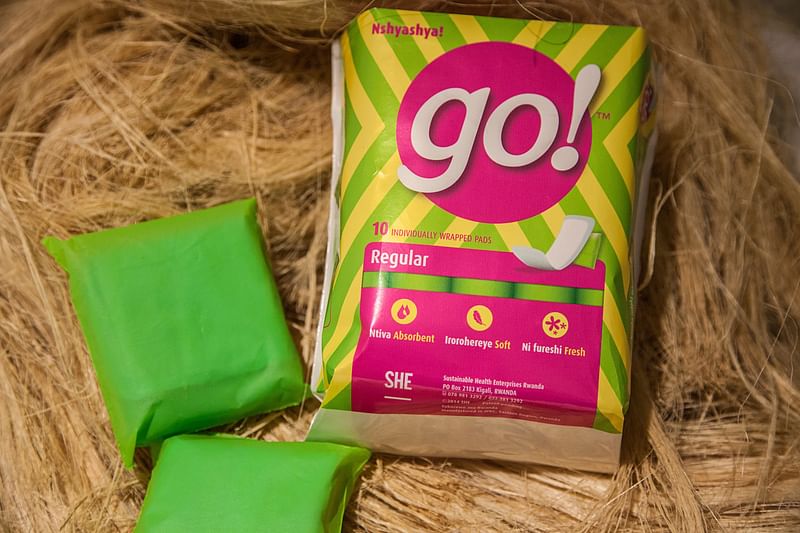
Sustainable Health Enterprises (SHE): “Girls, who, in much of the developing world already face enormous social and cultural pressures to stop their education many years before boys, face a compounding challenge: the lack of affordable menstrual pads and taboos surrounding menstruation, which further disrupt and often completely derail their schooling. A lack of sanitary pads also impacts the productivity of young women already in the labor force. Since raising the education level and status of women is widely recognized as the single most important indicator of economic and social progress, this is a major global problem. SHE, founded by Elizabeth Scharpf, is a successful enterprise currently based in Rwanda and planning to expand into other African nations and beyond. SHE has designed a comprehensive strategy to locally produce eco-friendly pads made from agricultural residue (discarded banana fiber) using no chemicals and very little water, simultaneously raising consciousness in the larger society in order to dispel unproductive attitudes surrounding menstruation. The organization not only seeks to provide sustainable hygiene products, but also aims to empower women and stress the crucial importance of girls' education. SHE's pads produce local employment and cost substantially less than conventional, chemical-laced, imported brands, which can cost as much as a day's wages for many women in developing countries. This is a compelling approach to this major social problem, and SHE’s model has the potential to be replicated globally.”
(Cover image) Taking Root's CommuniTree project “seeks to tackle three interlinked problems: deforestation, climate change, and poverty, through a comprehensive reforestation and carbon sequestration strategy. Currently working with thousands of smallholding rural farming families in Nicaragua (and earlier-stage projects in Guatemala) as well as local, regional, and national governments and international ‘social’ investors and donors, the program engages farmers to reforest degraded, marginal, underutilized portions of their farms with a range of native tree species suited to each locale, and trains them to manage their trees effectively using innovative data collection tools. Using funding from international carbon credit mechanisms, they are able to remunerate the local landholders during the ten-year period that it takes the first crop of trees to grow, after which the profits from sustainably thinned lumber become self-sustaining in perpetuity. CommuniTree is building networks to help farmers market finished lumber products both locally (eco-sensitive ‘green’ charcoal) and internationally (artisanal wooden crafts as well as shade-grown coffee and cacao), to boost their incomes. Because of the immense acreage of degraded agricultural lands around the world, this approach has the potential to be emulated widely and to contribute greatly to global carbon sequestration, as well as to habitat restoration and poverty alleviation.”
All photos courtesy of 2016 Fuller Challenge.

RELATED NEWS Living Breakwaters wins 2014 Buckminster Fuller Challenge


Share
0 Comments
Comment as :